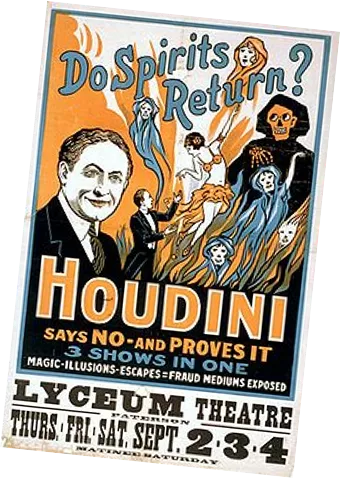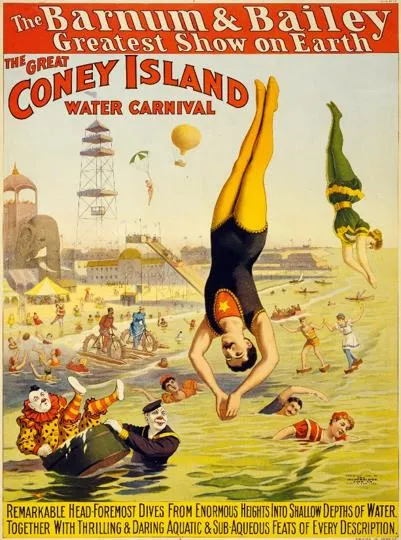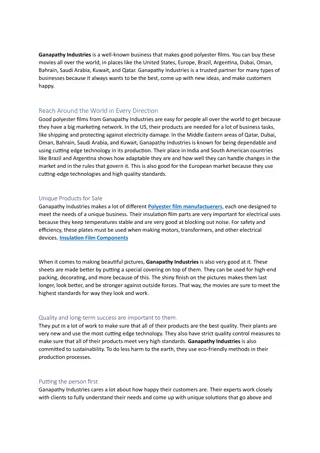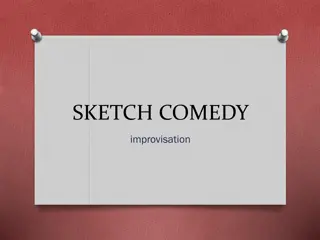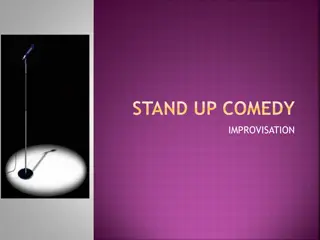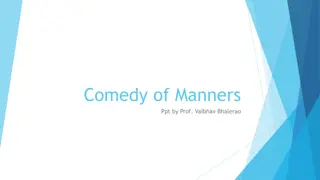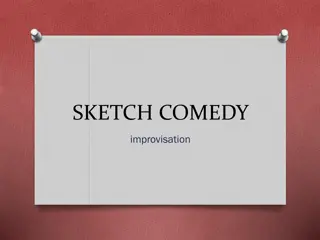Evolution of Comedy in Early Film
Considered the oldest genre in film, comedy thrived in the silent film era due to its reliance on visual action and physical humor. Mack Sennett, known as the King of Comedy, established Keystone Studios in 1912, focusing on inventive and frantic comedy featuring the Keystone Cops. Comedy formats varied from comedian-led acts to slapstick humor, with elements like pie throwing and slapstick antics. Other forms of comedy emerged, including deadpan, verbal comedy, screwball, and dark comedy. Notable silent comedy stars like Charlie Chaplin, Buster Keaton, and Harold Lloyd contributed to Hollywood's early success.
Download Presentation

Please find below an Image/Link to download the presentation.
The content on the website is provided AS IS for your information and personal use only. It may not be sold, licensed, or shared on other websites without obtaining consent from the author.If you encounter any issues during the download, it is possible that the publisher has removed the file from their server.
You are allowed to download the files provided on this website for personal or commercial use, subject to the condition that they are used lawfully. All files are the property of their respective owners.
The content on the website is provided AS IS for your information and personal use only. It may not be sold, licensed, or shared on other websites without obtaining consent from the author.
E N D
Presentation Transcript
Earliest Comedy Considered the oldest genre in film, most prolific Comedy was ideal for silent film because it relied on visual action & physical humor rather than sound. The first comics were trained by performing in the circus, burlesque, or vaudeville
Mack Sennett Nicknamed the King of Comedy Formed Keystone Company & Studios in 1912 Focused on inventive, visual, improvised comedy that moved frantically Liked exaggerated or unique looks Most famous films featured the Keystone Cops
Comedy Formats Comedian-led Well-timed gags Jokes Sketches Focus on the comic or character Situation-comedy Told within a narrative (story) Surroundings or environment Audience may know more than the characters
Slapstick Predominant in early film because sound wasn t required to make the gag Silent-movie comedies were known as slapstick comedies because aggression or violent behavior, not verbal humor, was the source of the laugh. Pie in the face Refers to the two pieces of wood hinged together that clowns used to produce a sharp sound that simulated the sound of one person striking another. Loss of your trousers Runaway/crashing cars Chasing people or animals
Other Forms of Comedy Deadpan An expression-less face of a stoic hero Verbal Comedy Buster Keaton was known for this Cruel, verbal wit (W.C. Fields) Sexual innuendo (Mae West) Screwball Absurdity of dialogues (Marx Bros.) Lunacy, craziness, eccentricity Self-effacing, thoughtful humor (Woody Allen) Ridiculous & erratic behavior Parody / Spoof Dark Comedy Sarcastic Ridicules the style or characters of serious work Pessimistic subject matter: war or death Impersonation, imitation
Silent Comedy Comedy in particular was a major factor in Hollywood s early success. Charlie Chaplin Buster Keaton Harold Lloyd
Charlie Chaplin The Little Tramp
Film Career Chaplin made his acting debut as a pageboy in a production of Sherlock Holmes 1908 -- Chaplin got his first taste of the United States, where he caught the eye of film producer Mack Sennett, who signed Chaplin to a contract for a $150 a week To differentiate himself from the clad of other actors in Sennett films, Chaplin decided to play a single identifiable character, and "The Little Tramp" was born, with audiences getting their first taste of him in Kid Auto Races at Venice (1914). By the age of 26, Chaplin, just three years removed from his vaudeville days, was a superstar. Made over 80 films in his lifetime the last 5 films were talking pictures
The Little Tramp To create The Tramp, Chaplin started with the character s costume: I had no idea of the character, but the moment I was dressed, the clothes and the make-up made me feel the person he was. All over the world, people saw this delicate, fierce, friendless little man as their second self, the person they really were inside. Chaplin is one of the few silent film stars still recognized by mainstream audiences today, because of his signature character the Little Tramp. Chaplin was one of the silent era s funniest and most versatile physical comedians, and while he was never as acrobatic as Buster Keaton or Harold Lloyd, he sure knew how to sell a gag.
Buster Keaton The Great Stone Face
Buster Keaton The Art of the Gag Known for his acrobatic visual gags, physical action, and for his deadpan, unsmiling expression-less stone face. While Chaplin rejected the modern world, Keaton embraced it. More often than not, Keaton s comic costar was a machine; a locomotive, an ocean liner, or a newsreel camera. His relationships seemed more successful with the machines he knew, than the love interest he was trying to pursue. Most suicidal stunt ever filmed House Falling!
Harold Lloyd The Silent Clown
Harold Lloyd A popular silent clown from the same era but dubbed 3rd after Chaplin and Keaton Highly successful as a producer and actor he grossed more $$ by maintaining ownership of his movies. Spent his early years with Mack Sennett Known for realistic, daredevil stunts His look: spectacles, innocent, average Joe characters Identified by his boy-next-door characters (usually named Harold) Most remembered film was Safety Last (1923), where he did his most perilous stunt.





